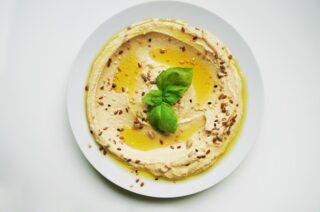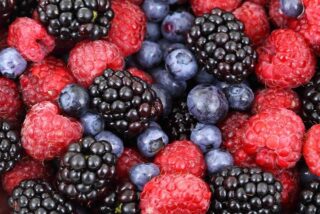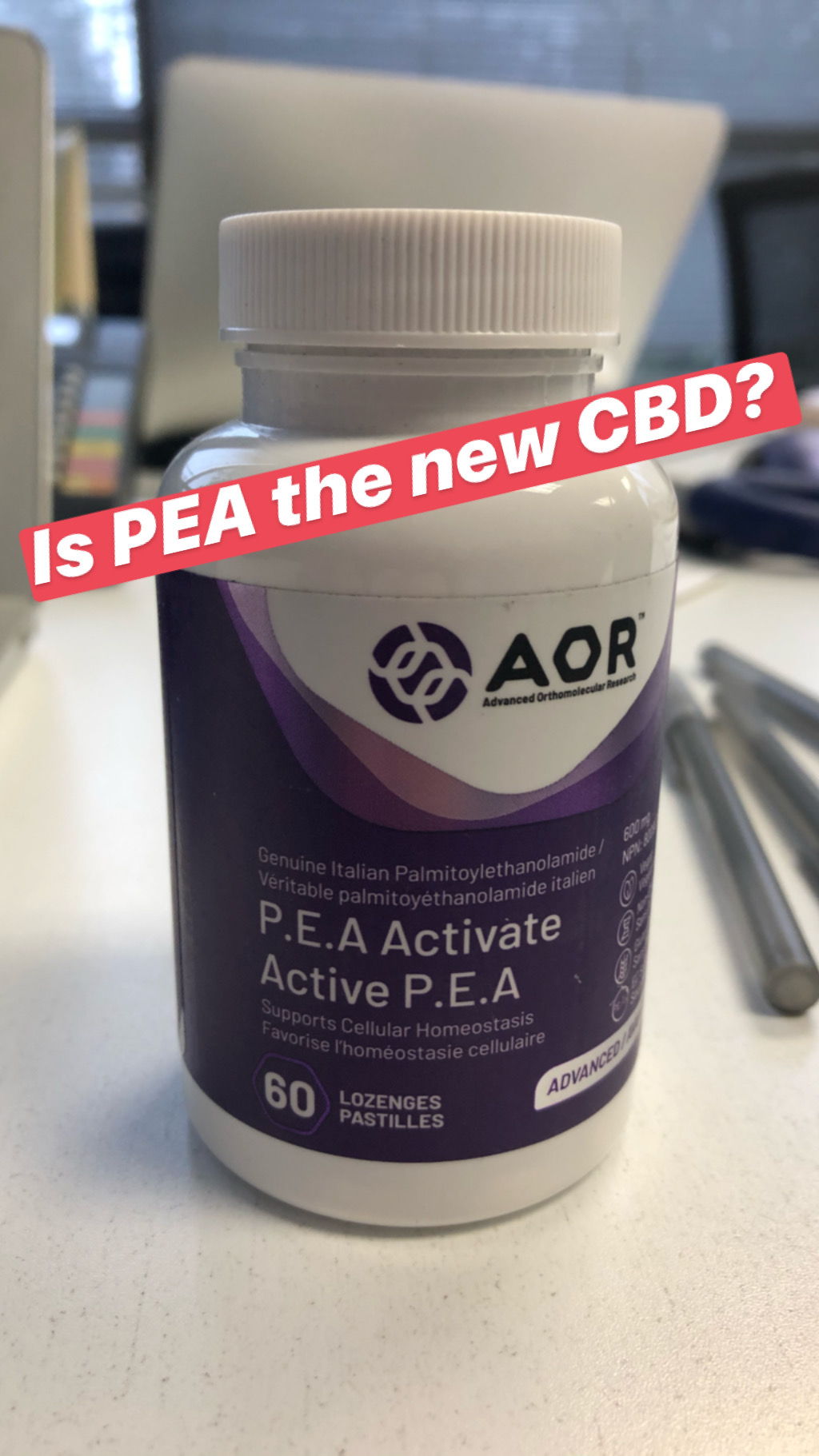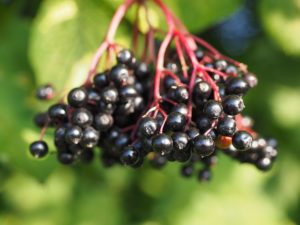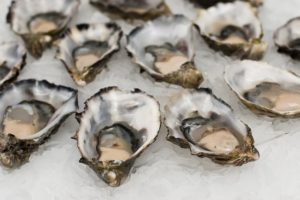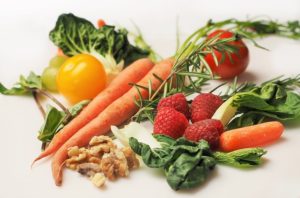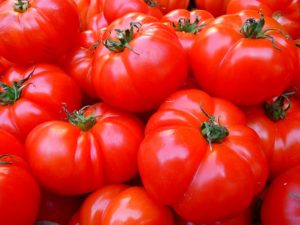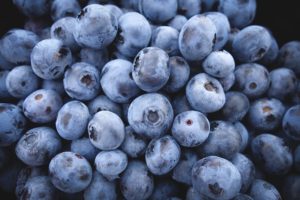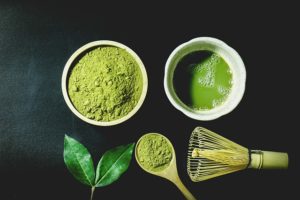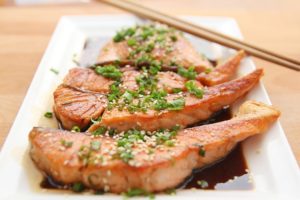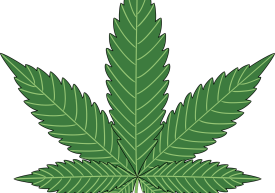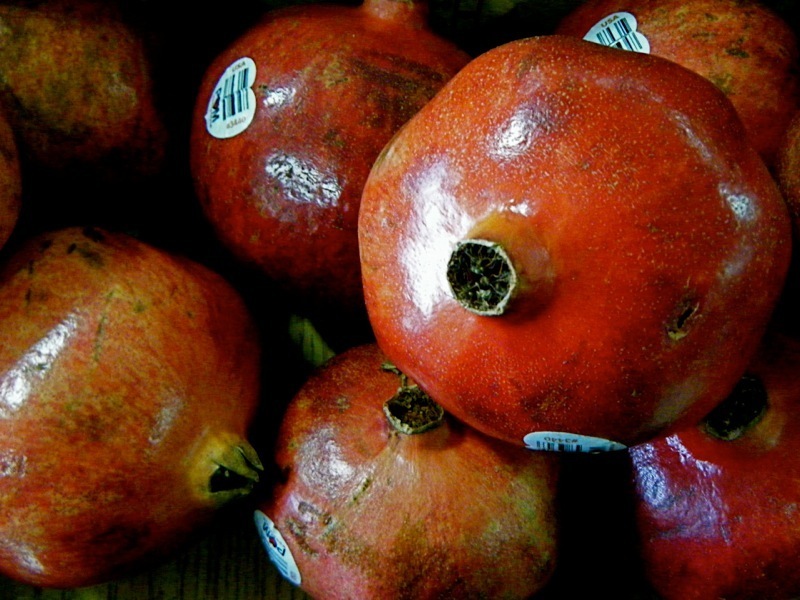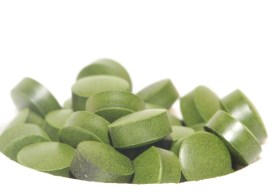What is a healthy lunch for school kids?
You want your kids to have a healthy lunch, but you’re not sure what that looks like. You know they need protein, carbs, phytonutrients and fibre, but how much of each? And what are some good sources of each? Here’s a quick rundown of what a healthy lunch for school kids looks like.
Protein
Kid’s need about 5-6 ounces of protein per day. As a parent, it can be difficult to ensure that your child is getting enough protein in their diet. The good news is that there are plenty of great sources of protein available, including lean meats, tofu, beans, lentils, nuts and seeds.
However, one challenge parents may face is finding ways to work around common nut and seed allergies. If your child or a classmate is allergic to nuts or seeds, be sure to check with your naturopath or pediatrician for suggestions on alternate sources of protein. There are plenty of good options available, including lean meats, tofu, beans, lentils and plant-based protein powders.
Carbs
Carbs are the body’s main source of energy. Kids need about 3-5 ounces of carbs per day. Complex carbs are the body’s main source of energy. They are made up of long chains of sugar molecules that the body can slowly break down and use for energy. Simple carbs are made up of short chains of sugar molecules and the body can break them down quickly for energy. Good sources of complex carbs include fruits, vegetables and whole grains. Some examples of complex carbs that kids would enjoy include:
-Oatmeal
-Quinoa
-Brown rice
-Sweet potatoes
-Fruits like apples, bananas and berries
-Vegetables like broccoli, cauliflower and carrots
Phytonutrients
Phytonutrients are important for kids because they help protect against disease and promote good health. Phytonutrients include antioxidants, which are important for helping to protect the body from damage caused by harmful molecules called free radicals. Free radicals can damage cells, leading to diseases such as cancer. Antioxidants help to counteract the effects of free radicals, preventing or slowing down cell damage. Some good sources of phytonutrients for kids include fruits, vegetables, herbs and spices. Some examples of antioxidant rich foods that kids would enjoy include blueberries, raspberries, strawberries, blackberries, cherries, tomatoes, bell peppers, broccoli, kale and spinach. These foods are packed with nutrients that are good for kids’ growing bodies.
Fibre
Fibre is an important part of a healthy diet. It helps the body feel full and can help with weight loss and maintenance. Kids need about 25 grams of fibre per day. Fibre comes in two forms: soluble and insoluble. Soluble fibre dissolves in water and can help lower cholesterol and blood sugar levels. Good sources of soluble fibre include oats, legumes, apples and berries. Insoluble fibre does not dissolve in water and helps with bowel regularity. Good sources of insoluble fibre include whole grains, vegetables and fruits with skins.
Conclusion
A healthy lunch for school kids should include a variety of protein, carbohydrate and fiber-rich foods to ensure that they are getting the nutrients they need to stay energized and focused throughout the day. While nuts and seeds are healthy sources of protein, fat and fiber, there are other healthy alternatives for those whose schools do not allow them. Parents should always consult with their pediatric naturopath, pediatrician or dietician to create a healthy lunch plan that meets their child’s specific needs.
It was my hope to find an effective alternative to Cannabidiol (CBD) that wouldn’t land me in jail when I travel; so is PEA the new CBD?
PEA stands for Palmitoylethanolamide. It is a fatty acid that is found in Eggs, Cheese, Meats and Peanuts. We also make PEA during stress, infections, inflammation, trauma, allergies, pain, cardiac disease, kidney disease and obesity. Much like our endocannabinoids, PEA is responsible for maintaining cellular homeostasis.
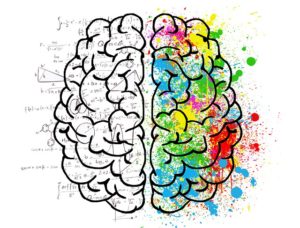
How does it work?
While PEA does not have a direct effect on Cannabinoid receptor (CB1 and CB2) it does have similar mechanisms of action to our endocannabinoids and cannabidiol (CBD). PEA looks very similar to our body’s own endocannabinoids (AEA and 2-AG). These similarities allow PEA to exert effects similar to our AEA and 2-AG.

PEA down regulates mast cells, which are responsible for the release of histamine and other inflammatory mediators. PEA can therefore be a powerful molecule for immune heath, inflammation, pain, neuro-protection and allergies. PEA has direct action on receptors GPCR55 and GPR119, which produce effects similar to activation of CB1 and CB2 by endocannabinoids, THC and CBD. PEA also acts similarly to CBD by affecting the breakdown of endocannabinoids via inhibition of the enzymes FAAH and MAGL.
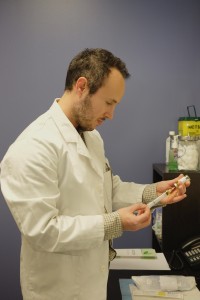
The Research
Several studies have shown that when PEA is used with opioid type drugs for low back pain, the dose of the opioids could be reduced significantly. PEA was found to exert pain relief animal models of inflammation and neuropathic pain. These analgesic effects are thought to be due to increasing endocannabinoid levels similarly to how CBD works. All in all many studies have revealed that PEA exerts similar effects to CBD. So I thought I would give this supplement a whirl, as a alternative to CBD (especially for travel) would be an important option for patients using CBD.
My 5-day Trial with PEA
I took the supplement P.E.A. Activate from AOR , which contains 600mg PEA per lozenge. My daily dose was two lozenges per day and I did that for 5 days. I noticed a strange light-headed feeling about 5 minutes after chewing my first lozenge. The feeling lasted for a bout 30min. I was excited that I actually felt a bit different after that fist dose by unfortunately each dose produced a similar effect (a light relaxing feeling) that only lasted between 30-60min. There didn’t seem to be much carry over from one dose to another. The effects were always pretty fast acting but short-lived. Furthermore I had a return of some muscle soreness that was absent for most of the time that I was taking my CBD supplement. So, it seemed like, for me, the PEA was not having the same effect that I had experienced while on CBD.
In summary, the effects that I experienced during my PEA trial were fast acting but short-lived. PEA may therefore be a useful tool for acute episodes of anxiety, pain etc… but it did not have the same accumulative and long term effects that I experienced with CBD. The research on PEA is compelling and it is possible that this supplement warrants a more long-term trial. According to the research PEA seems to be a potential alternative to CBD but from my experience it falls a bit short. Check out my video review of PEA here.
Cold and Flu season is here! Now that kids are back to school and the season is changing we should start thinking about preventing colds and flu. As a Naturopathic Doctor part of my job is counseling parents on safe and effective ways to treat and prevent colds and flu for the whole family. Here are 5 things that will help prevent colds and flu and can even help to ameliorate symptoms and shorten duration of an active infection.
-
Probiotics
Probiotics help boost the immune system – Studies have shown that probiotics affect immune cells throughout the body. When certain strains of probiotics are introduced into our intestine they help to repair intestinal cells and they boost production of antimicrobial substances. In one study, 326 children aged 3-5 years were randomly assigned to receive, in double-blind fashion, probiotic supplementation. Treatments were given twice per day in divided doses for 6 months, including the winter season. Compared with placebo, the probiotic group had the following results; fever reduction 53-73%, cough reduction 41-62%, decreased runny nose 28-59%, decreased need for antibiotics 68-82%, reduced absence from school 28-32%.
-
Elderberry
Elderberry extracts inhibit bacteria and viruses – Not only does elderberry syrup taste great, studies have shown that it inhibits the bacteria and viruses associated with common colds and the flu. One study demonstrated that an elderberry liquid extract possesses antimicrobial activity against both streptococci bacteria and influenza viruses. Another study looked at 312 air travellers flying from Australia to an overseas destination. Those travellers who took an elderberry extract before, during and after travel had fewer colds, less sick days and less symptoms.
-
Vitamin C
Vitamin C supports immune cells – Vitamin C is very important for optimal immune system functioning. Vitamin C helps immune cells get to where they need to be, kill pathogens effectively, protect the body from damage and clean up after battling infections. Studies have shown that adequate vitamin C in the blood helps prevent infections, is necessary to fight infections and helps with recovery. The recommended daily intake of vitamin C is 100-200mg/day; however during active infection, the metabolic demand increases and therefore the requirement for vitamin C is likely to be higher. Even in this day and age, vitamin C is the fourth leading nutrient deficiency in North America. Poor diet and increases in free radical exposure due to an unhealthy lifestyle may be contributing factors. Excellent sources of vitamin C are Broccoli, Citrus Fruits and Berries.
-
Zinc
Zinc is essential for immune system communication – The importance of zinc for proper immune function has been well established. Zinc deficiency undoubtedly causes immune system malfunction. The cells of our body are in constant communication. During infection there is a need for effective communication between immune cells in order to get rid of the “bad guys”. Communication happens in the form of chemical messengers and enzymes. Zinc is an essential component of these chemicals and enzymes. As with vitamin C, during active infection our requirement for zinc is likely to increase. Studies have shown that Zinc supplementation during infection can shorten the duration of the illness. Excellent dietary sources of zinc include: Meat, Shellfish, Legumes, Nuts and Seeds. Supplementation may be important with a vegan or vegetarian diet.
-
Vitamin D
Vitamin D is the supervisor of the immune system –Vitamin D has many functions in the body, and receptors for vitamin D can be found on many different tissues. One important function for vitamin D is in the modulation of our immune system. Studies have suggested that vitamin D is able to both calm down and rev-up the immune system according to what our body needs it to do. This is why Vitamin D is thought to be as important in autoimmune disorders as it is in infections.
Vitamin D deficiency can cause the immune system to behave erratically. Unfortunately in Canada we have one of the highest incidences of vitamin D deficiency in the world. Our primary source of vitamin D is from sunlight and therefore supplementation becomes important especially during the winter months. Studies have shown that there is a higher incidence of upper respiratory tract infections in athletes who are deficient in the vitamin and who train in the wintertime. Supplementation had preventative and symptom reducing effects. Aside from sunlight, some dietary sources of vitamin D are: fortified foods, fatty fish, beef liver, egg yolks and cheese.
Even vitamins and minerals at high dosages can be dangerous, especially in children. It is always recommended to consult with a health care professional, such as a Naturopathic Doctor, before supplementing on your own.
[button size=”btn-large” link=”https://doctorshawn.ca/contact-us/” target=”_blank” ]Book an appointment today![/button]
Leyer, GJ et al. Probiotic effects on cold and influenza-like symptom incidence and duration in children. Pediatrics 2009; 124-179. Walker, WA. Mechanisms of action of probiotics. Clin Infect Dis. 2008; 46 (Suppl2): S87-91.
Curr Opin Gastroenterol. 2011 October ; 27(6): 496–501. doi:10.1097/MOG.0b013e32834baa4d. Probiotics and immune health Fang Yana and D.B. Polkb,c,d
Elderberry Supplementation Reduces Cold Duration
and Symptoms in Air-Travellers: A Randomized,
Double-Blind Placebo-Controlled Clinical Trial Evelin Tiralongo 1,2, *, Shirley S. Wee 2,3 and Rodney A. Lea 4 Received: 8 February 2016; Accepted: 18 March 2016; Published: 24 March 2016
Krawitz et al. BMC Complementary and Alternative Medicine 2011, 11:16
http://www.biomedcentral.com/1472-6882/11/16
Inhibitory activity of a standardized elderberry
liquid extract against clinically-relevant human
respiratory bacterial pathogens and influenza A
and B viruses Christian Krawitz1†, Mobarak Abu Mraheil1†, Michael Stein2, Can Imirzalioglu1, Eugen Domann1, Stephan Pleschka2*,
Torsten Hain1*
Vitamin C and Immune Function Anitra C. Carr 1, * and Silvia Maggini 2
1 Department of Pathology, University of Otago, Christchurch, P.O. Box 4345, Christchurch 8140, New Zealand
2 Bayer Consumer Care Ltd., Peter-Merian-Strasse 84, 4002 Basel, Switzerland; silvia.maggini@bayer.com* Correspondence: anitra.carr@otago.ac.nz; Tel.: +643-364-0649 Received: 21 September 2017; Accepted: 31 October 2017; Published: 3 November 2017
Biofactors. 2014 Jan-Feb;40(1):27-40. doi: 10.1002/biof.1114. Epub 2013 Jun 27.Zinc signals and immune function. Haase H1, Rink L.
Cochrane Database Syst Rev. 2013 Jun 18;(6):CD001364. doi: 10.1002/14651858.CD001364.pub4. Zinc for the common cold.
Vitamin D3 Supplementation Reduces the Symptoms
of Upper Respiratory Tract Infection during Winter
Training in Vitamin D-Insufficient Taekwondo
Athletes: A Randomized Controlled Trial Hyun Chul Jung 1 , Myong-Won Seo 2 , Sukho Lee 3 , Sung Woo Kim 2 and Jong Kook Song 2, * 1 Department of Kinesiology, College of Health Sciences, University of Louisiana at Monroe, 700 University
Avenue, Monroe, LA 71209, USA; jung@ulm.edu
2 Department of Taekwondo, College of Physical Education, Kyung Hee University, 1732 Deokyoungdaero, Giheung-gu, Yongin-si, Gyeonggi-do 17014, Korea; smilly1004@khu.ac.kr (M.-W.S.); kswrha@khu.ac.kr (S.W.K.)
3 Department of Counseling, Health, and Kinesiology, College of Education and Human Development,Texas A&M University-San Antonio, One University Way, San Antonio, TX 78224, USA; slee@tamusa.edu* Correspondence: jksong@khu.ac.kr; Tel.: +82-31-201-2708 Received: 2 August 2018; Accepted: 10 September 2018; Published: 14 September 2018
Mechanisms Underlying the Regulation of Innate and
Adaptive Immunity by Vitamin D Ran Wei and Sylvia Christakos *
Received: 25 June 2015 ; Accepted: 15 September 2015 ; Published: 24 September 2015 Department of Microbiology, Biochemistry and Molecular Genetics, New Jersey Medical School, Rutgers, the State University of New Jersey, 185 South Orange Ave, Newark, NJ 07103, USA; weira@njms.rutgers.edu
* Correspondence: christak@njms.rutgers.edu; Tel.: +973-972-4033; Fax: +973-972-5594
Multiple Sclerosis is a complex disease; those living with it need a simple approach. A treatment approach should appreciate the physiology of the disease process without neglecting the human body as a holistic system, and the patient as a person.
Naturopathy is an ideal philosophy of medicine for the treatment of M.S. as it aims to address disease processes and symptoms without loosing sight of the patient as an individual.
I chose to focus in neurological disease early into my professional career and as a result I have come across many complex chronic diseases of the nervous system including all subtypes of M.S. When patients come for their initial visit it is not uncommon to be privy to a long list of life events that have impacted the disease, symptoms that have evolved over years and medications that have been tried, stopped and tried again.
It’s easy to see why the practitioner on the other end of the patient with M.S. can become overwhelmed and confused, loosing sight of the big picture, dismissing the patients needs and goals. Unfortunately, this medical tunnel vision re-aimed at addressing each and every concern translates into complex and confusing treatment plans that most patients cannot comply with. I sympathize with these patients who have to remember to take dozens of pills while also dealing with a life altering condition.
To make matters worse, these confusing treatment plans hardly ever work because they tend to forget that the human body is not a series of islands, rather it’s a society striving to work in harmony and balance. The key to developing a simple, understandable and effective treatment plan is to figure out what is out of balance and how do we bring it back.
A typical treatment plan for M.S. has three parts: Foundations, The Immune System and Specific Symptoms. Since we are working toward bringing the body back into balance it is important to take the time to hear the full story and timeline of how the condition started and progressed. Often during the initial consultation it will become clear as to what type of events precluded the first attack and how these events triggered a physiological imbalance.
Foundations
It’s a futile effort to try and treat symptoms while the very basics of health and wellness are not fortified. The foundations of health can be summed up into three parts: Sleep, Diet and Exercise.
Sleep is the healing chamber for the body. Recently studies have shown that the brain undergoes a type of detoxification process while we sleep. Many neurodegenerative diseases have been correlated to poor sleeping habits. It is common to see sleeping issues in patients with M.S. In fact I have had a few cases where years of terrible sleep may have contributed to the patient experiencing their first symptoms related to M.S. This makes sense in the light of the new research demonstrating how important sleep is in clearing neurotoxic compounds from the brain.
One of the most important protocols I put together for my M.S. patients is aimed at improving sleep. This is achieved through sleep hygiene education and supplements that have been carefully vetted over my years in practices for their effectiveness in improving sleep initiation and maintenance.
Diet is important for a number of reasons, some are general and some are specific to M.S. The food we eat and its relation to our digestive tract determines our nutritional robustness.
M.S. is a chronic neuro-inflammatory state and therefore patients with M.S. will be using up vitamins and minerals involved in inflammatory processes at a greater rate than in a healthy control group. Therefor it’s important to determine what the nutritional status is of the M.S. patient (through consultation and specific lab tests), bring it back into balance and correct deficiencies. Otherwise the body will be unable to cope with the inflammatory process and the disease will progress.
It is also important to identify any food allergens, intolerances and sensitivities in the M.S. patient for these will perpetuate the inflammation. Chronic inflammation has a detrimental effect on the immune system, which I will discuss further in the next part of the treatment plan.
Another aspect related to diet is the health of the gastrointestinal tract and more specifically the micro-biome (the bacteria of the gut). A healthy micro-biome is important for detoxification, nutrient absorption and immune system regulation. A protocol addressing diet will focus on testing for nutritional deficiencies, food sensitivities, specific dietary guidelines for M.S. and supportive supplements where necessary.
A good dietary resource specific to M.S. is The Wahls Protocol.
 Exercise is a powerful health modulator and is under-appreciated for its importance in chronic disease and specifically M.S. Often exercise comes in the form of physiotherapy in progressive M.S. and the first thing I will do with a patient is set them up with one of the physiotherapists in my clinic (if they don’t already have a physiotherapy program). Often patients newly diagnosed with M.S. are neglected by the medical system in terms of exercise. In-patient rehab programs are inadequate, scooters and wheelchairs are promoted over therapy. Exercise and physiotherapy are instrumental in promoting neuroplasticity, decreasing inflammation, improving energy metabolism, maintaining and improving upon range of motion.
Exercise is a powerful health modulator and is under-appreciated for its importance in chronic disease and specifically M.S. Often exercise comes in the form of physiotherapy in progressive M.S. and the first thing I will do with a patient is set them up with one of the physiotherapists in my clinic (if they don’t already have a physiotherapy program). Often patients newly diagnosed with M.S. are neglected by the medical system in terms of exercise. In-patient rehab programs are inadequate, scooters and wheelchairs are promoted over therapy. Exercise and physiotherapy are instrumental in promoting neuroplasticity, decreasing inflammation, improving energy metabolism, maintaining and improving upon range of motion.
My clinic specializes in neurological rehabilitation using the Bobath Physiotherapy approach. Physio-Logic
The Immune System
Multiple Sclerosis is an autoimmune condition and therefore one cannot overlook the role of the immune system. Autoimmunity basically translates to a confused immune system that has targeted healthy cells and tissues rather than disease. The philosophy behind this part of the treatment plan addresses two questions: how the immune system became confused and how to bring it back into harmony.
There are many theories as to the cause of M.S., to name a few: Genetics, Vitamin D deficiency, Environmental Toxin Exposure, Candida Overgrowth, Dairy Protein Antigen Confusion and Leaky Gut Syndrome. There are truths to be told within many of these theories but in reality we just don’t know exactly what causes M.S. Some things we do know are the triggers for symptom activation, and things that reduce the risk of developing M.S. We know that stress (physical and/or emotional) often precipitate symptom relapse and progression. We also know that having adequate vitamin D levels are protective toward the development of M.S.
 Vitamin D is not longer thought of as merely a bone-building vitamin. In reality it is more of a hormone and has a very important role in maintaining the health of the immune system. Step one of addressing the immune system is making sure the patient has optimal levels of vitamin D and if not, to adjust those levels using specific supplemental doses of vitamin D along with calcium and regular follow-up blood work.
Vitamin D is not longer thought of as merely a bone-building vitamin. In reality it is more of a hormone and has a very important role in maintaining the health of the immune system. Step one of addressing the immune system is making sure the patient has optimal levels of vitamin D and if not, to adjust those levels using specific supplemental doses of vitamin D along with calcium and regular follow-up blood work.
Stress, whether it physical or emotional, causes a burden on the body. Most of the time we are able to cope with short durations of stress; however, when the stressful event is severe enough or lasts long enough it can impact the immune system in a negative way. Chronic stress can affect the immune system in two ways: Creating chronic inflammation that harms tissues and suppressing immune cells needed to fight infection.
When the immune system is under prolonged stress it becomes tired and makes mistakes, much like how we feel when under stress. One of these possible mistakes is mounting an autoimmune attack, harming normal healthy tissue rather than disease. Prolonged stress also depletes natural anti-inflammatory compounds like cortisol, allowing inflammation to run amuck. Therefore the protocol built around the immune system is aimed at decreasing stress on the immune system and bringing the immune system back into balance.
Anything that can be causing unnecessary inflammation needs to be dealt with and therefore chronic infections and food sensitivities must be addressed. Specific lab testing is used to investigate infections and sensitivities. Common food sensitivities in M.S. patients include: Dairy, Gluten, Yeast and Egg.
Once the major obstacles to a healthy immune system are removed we can work toward assisting the immune system back into a balanced state. The most important cells involved in bringing the immune system back into balance are “regulatory T cells” also known as “T suppressor cells”. These cells maintain tolerance in the immune system preventing autoimmunity. Part of the protocol is therefore aimed at supporting these cells. Some compounds that influence regulatory T cells are: probiotics, vitamin D, vitamin A, Omega 3 fatty acids and food sensitivities.
Specific Symptoms
Treating foundations and immune system irregularities take time, therefore it is almost equally important to address the specific symptoms of the patient. Fatigue, weakness and pain are often obstacles to important foundational concerns like sleep and exercise.
Fortunately, there are many great strategies within Naturopathic medicine to help address the most common symptoms in M.S. namely: Weakness, Spasticity, Fatigue, Pain, Bowel and Bladder issues. There are dozens of supplements that have shown promise in treating the common symptoms of M.S. The art of the practitioner is in choosing the right compounds for the right patient. As an example, medical marijuana can be very effective for spasticity, pain, bladder dysfunction and sleep but can exacerbate weakness. A good practitioner with experience in treating M.S. will know how to choose the appropriate medications for the patients needs.
Multiple Sclerosis is a complex condition with many subtypes and many different ways it affects the individual patient. Naturopathic medicine aims to treat the root cause of disease while also addressing the individual concerns of the patient. The treatment plan can be summed up into three areas: Foundations, Immune System and Specific Symptoms. This helps direct the practitioner toward the right approach and simplifies the philosophy behind the treatment, improving upon compliance and therefore patient outcomes.
[button size=”btn-large” link=”https://doctorshawn.ca/contact-us/” target=”_blank” ]Call us today![/button]
It’s the summer of 2018 and it’s a hot one. Having fun in the sun is what we dream about all winter long and while we do benefit from some sun exposure (boosting levels of vitamin D and serotonin) we must also balance sun exposure with sun protection. In this article I will outline some general guidelines with reference to safe sun exposure, getting enough vitamin D and how consuming certain foods may help further protect us during recommended exposure times.
Exposure
According to recent research we now know that vitamin D is not only important for strong healthy bones but also plays a role in preventing some chronic diseases like Multiple Sclerosis and Cancer. So we need to know some general guidelines for getting the right amount of sun exposure while helping protect ourselves from damaging UV radiation.
In 2001 the Australian Radiation Protection and Nuclear Safety Agency set out to determine daily UV radiation levels in major cities across Australia. How much sun was needed to produce adequate levels of vitamin D and how much exposure could produce damage to the skin was investigated. The general guidelines to come out of the report were as follows: In the peak of the summer, July and August in North America, “2 to 14 minutes of sun three to four times per week at midday will give fair-skinned people with 15 per cent of the body exposed the recommended amount of Vitamin D. However, redness (skin damage) can occur in only eight minutes in these conditions.
So in peak summer times from 10 am to 3pm, you should use protection against the sun; shade, hats, clothing, sunglasses and sunscreen.
But earlier in the day and later in the afternoon, for a similar period of sun exposure and vitamin D manufacture, you get much less skin damage.”(http://www.abc.net.au/health/thepulse/stories/2006/04/05/1609208.htm)
For the months just before and after the peak summer months (June and September) the study revealed that the time of sun exposure needed for adequate vitamin D levels increases to 10 to 15 minutes 3-4 times per week. In the fall, winter and early spring months we need short periods of exposure during peak times of the day 10am-3pm in order to make enough vitamin D.
Sun-Blocking Foods
The question then becomes; in those times of recommended sun exposure how do we further protect ourselves from the damage of UV radiation? Part of the answer may be in the food we eat and beverages we drink. UV radiation helps us to make important compounds such as vitamin D but it can also cause damage to our cells. Cellular damage occurs via the production of inflammation and damaging compounds called free radicals. Some important compounds in our diet that combat inflammation and free radicals are: Omega-3 fatty acids and Antioxidants.
Antioxidants are compounds found in fruits and vegetables that serve to protect the plant against the harmful effects of its environment, including UV radiation. Many of these antioxidants incur the vibrant colors we associate with fruits and vegetables onto them.
Lycopene is a powerful antioxidant found in red colored fruits and vegetables such as: Tomatoes, Watermelon, Guava, Grapefruit, Papaya and Red Peppers including Chili Pepper. Lycopene is most easily absorbed when it has been cooked, making tomato paste and cooked tomatoes an excellent source of bio-available lycopene. Not only does this antioxidant protect the fruit/vegetable from UV damage, when we consume lycopene, it protects our body as well.
Anthocyanidins are a group of antioxidants that incur free radical protection and have a dark red or purplish color. Rich sources of anthocyanidins include: Blueberries, Acai, Pomegranate, Blackberries and Cherries.
The flavonoid antioxidants in green tea include the very powerful polyphenol EGCG. EGCG has not only been shown to inhibit tumor cells in some cancers but has also been shown to protect cells from the aging effects of UV radiation. Particularly matcha green tea (pulverized powdered tea leaves) can be 137 percent higher in EGCG than regular water infused tea leaf. Dark chocolate is also very high in phenols and can incur a 25 percent increase in sun tolerance at 2 ounces of over 70% cacao per day.
Another compound important for protecting our body against the potentially harmful effects of sun exposure are omega-3 fatty acids. These fatty acids help to drive an anti-inflammatory pathway in the body. Radiation and chronic disease induces inflammation which can lead to cellular damage and premature aging. Fish is an excellent source of omega-3 fatty acids, particularly Salmon, Herring, Mackerel, Trout and Sardines. It is recommended to eat at least 2 servings of high omega-3 fish per week or to take a fish oil supplement daily.
Another good source of omega-3 fatty acids are flaxseeds. Flaxseeds also contain compounds called lignans which may protect against the development of some cancers. It is recommended to have a half teaspoon of ground flaxseeds per day or a flaxseed oil supplement.
Although these are all specific examples of foods rich in sun protecting compounds, a good general rule of thumb is too eat plenty of vibrantly colored fruits and vegetables which will undoubtedly be rich in antioxidants. It is also just as important to limit foods which can cause free radical damage and inflammation, these include: sugar and red meats.
Equip your body with sun protecting foods and follow the guidelines as to when to allow for uninhibited sun exposure. By doing so you will make the D and be problem free.
[button size=”btn-small” link=”https://doctorshawn.ca/contact-us/” target=”_blank” ]Book Now[/button]
A Naturopathic Doctor can play an important role in managing CMT through dietary counseling, specialized testing and by offering relevant integrative therapies.
CMT is a hereditary disorder affecting the motor and sensory nerves. It’s characterized by progressive loss of muscle tissue and sensation in various parts of the body. Currently CMT is incurable and is the most common inherited neurological disorder and affects approximately 1 in 2,500 people.
In terms of managing CMT, by far the most important goal is to maintain movement, muscle strength and flexibility. Often overlooked is the role diet, pain management and antispasmodics can play in CMT. Having a naturopathic doctor familiar with neurological conditions can be a valuable part of a healthcare team.
Sugar
Although sugar is sweet and delicious, at high concentrations it can become a poison for the nervous system. Uncontrolled blood sugar, including diabetes, will exacerbate nerve damage and peripheral neuropathy in CMT. A naturopathic doctor can test blood sugar in order to determine if it poses a risk. Dietary counseling, such as education around glycemic index and glycemic load, can help balance blood sugar levels. There are also effective strategies that can boost insulin sensitivity thus lowering blood sugar. These include; low impact exercise and supplements like chromium, berberine, agaricus mushroom, american ginseng, and vitamin B3.
Diet
A diet rich in antioxidants and anti-inflammatory compounds can greatly improve neuromotor and locomotor performance. Curcumin and vitamin C are two natural compounds that have been and are currently being investigated as potential therapeutic agents for CMT. One study demonstrated a decrease in neuron death and an increase in size and number of nerve sheath cells after administration of curcumin. Intermittent fasting is a diet strategy that promotes a 16 hour fasting period each day and has been shown to improve locomotor functioning in CMT patients after 5-months.
Nerve Pain
Nerve pain and neuropathy can be addressed through a few different approaches. Application of topical counterirritants such as capsaicin and menthol can work by overriding pain signals. Peripheral pain blockers work by re-routing pain signals locally at the source of the pain. Effective peripheral pain blockers include: acupuncture, electro-acupuncture, moxabustion and transcutaneous electrical nerve stimulation (TENS). Central pain blockers block or override pain signals where they are interpreted, in the brain. Central pain blockers include cannabis, wild lettuce and california poppy.
Cramps and Spasms
There are many effective integrative therapies for cramps and muscle spasms. These therapies work by balancing electrical conduction at the muscle and stimulating inhibitory neurotransmitters. Some of the most effective therapies are: magnesium, acupuncture, GABA, valerian, cramp bark, skullcap, passionflower and cannabis.
Nerve-Protection
One of the largest areas a naturopathic doctor can serve as a crucial part of the integrative healthcare team is in offering strategies to prevent further nerve damage, and in some cases reversing existing nerve damage. Neuroprotectants generally belong to two main categories: antioxidants and anti-inflammatories. Neuroprotectant antioxidants include: alpha lipoic acid, glutathione, resveratrol, EGCG, flavonoids, Co-Q10, CBD and THC. Anti-inflammatory strategies include testing for food sensitivities, hormone levels and environmental toxins. Anti-inflammatory supplements include Omega 3 fatty acids, curcumin, boswelia, and CBD.
THC and CBD the ABC’s of Medical Marijuana
The perspective of a Naturopathic Doctor
As a practicing Naturopathic Doctor, I have understandably been occupying a front row seat in what has become one of today’s hot topic health issues; the use of medical marijuana. I have seen a trend recently in my patients; they’re dropping the conventional pain medications and experimenting with the unquestionably still taboo, cannabis. Two things seem to be driving this phenomenon: traditional pain medications aren’t doing the trick anymore and there is a curiosity about this promising although misunderstood plant.
Professionally, I too have been very curious about the medical applications of marijuana. For years patients would confide in me and share their experiences with using different preparations of cannabis. One of the usual preparations is “hemp oil”, which can contain a significant amount of a cannabinoid called CBD. Hemp oil may have been dismissed as folk remedy; however, with the recent surge in medical marijuana use prompting an educated examination of a potential effective therapy. I can now appreciate that hemp oil is a way to reap the benefits of cannabis without getting intoxicated.
There are thousands of articles on the web that explain in depth what the different components of marijuana are and how they differ in pharmacology and therapeutic applications. The point of this article is not to give a thesis but rather present a concise easy to grasp understanding of what those components do in the body and why cannabis in one form or another should be considered as a first choice medicine.
Before presenting the different types and components of marijuana, I would like to give this article some context and legitimacy by introducing myself, and my medical background. I am a Naturopathic Doctor and have been in private practice for just over 7 years in Toronto Canada. Over the past 4 years my practice has focused on the treatment of pain, debilitating neurological conditions and cancer. This really sets the stage as the first few regulated cannabis medications in Canada, namely Nabilone and Sativex, were approved for neuropathic pain, spasticity and nausea associated with cancer treatment and multiple sclerosis; both of which I see more consistently than the average naturopathic doctor. Naturally I started having patients that had experience with these medications or who were experimenting with unregulated forms of cannabis.
A watershed moment in my practice occurred when I began treating a 10-year-old girl that had suffered a stroke. I thought she would benefit from cannabis but at the same time was hesitant about subjecting her to the hallucinogenic properties of THC. Fortuitously around that very same time I viewed a CNN Sanjay Gupta report about a low THC / high CBD strain of marijuana called “charlottes web”. Treatment with this strain had been helping a young girl with a rare debilitating condition associated with frequent seizures. My young patient didn’t have seizures but had chronic high muscle tone as is also seen during seizures. The report also mentioned how CBD is not hallucinogenic. I was certainly intrigued as to the potential efficacy of this treatment and devoted both time and resources in understanding medical cannabis and CBD. As a result of this study and promising results, I now recommend CBD regularly in my practice. Now let’s take a step back and understand what CBD is and what does it do.
Although there are thousands of potentially therapeutic compounds in cannabis, research has really focused on two: THC and CBD. Depending on the sex and strain of the cannabis some will be higher or lower in one compound than the other.
THC is what gets you high. It acts on cannabinoid receptors in the body and brain with the result of inducing the perception altering experience that marijuana is known for. Along with the “high”, research has pointed out that there are definite pain lowering and mood enhancing properties of THC. However; there are some concerns with THC as it may impact learning in the developing brain, may trigger a psychotic episode in individuals predisposed to schizophrenia and impacts the users ability to carry out daily living tasks such as operating machinery and driving.
CBD, on the other hand, is a non-psychoactive component of cannabis that can comprise up to 40% of the active cannabinoids in marijuana. Although large doses of CBD in my experience can induce an intense feeling of relaxation there are no perception altering effects from even the highest doses of CBD. Research into this curious compound has pointed out that rather than binding to cannabinoid receptors in the body, as does THC, CBD for the most part blocks activity at these receptors and exerts most of its effect at a receptor called 5-HT1a. The 5-HT1a-receptor is linked to serotonin activity.
The overall effect of CBD in the complicated milieu of the human body is that it is anti-inflammatory, mood enhancing, offers protection for the nervous system, promotes relaxation, anti-spasmodic and negates some of the unwanted side-effects of THC consumption. CBD has even been shown to prolong the beneficial effects of THC by increasing the body’s amount of cannabinoid receptors. Furthermore, there has yet to be any evidence for negative side effects or toxicity even at very high doses of CBD per day. CBD research is currently exploring promising therapeutic effect in epilepsy, dementia, migraine and cancer. So all in all it’s a pretty impressive compound.
Now you may be wondering; “how do I get CBD?” – do I need a prescription and is it legal? Technically in Canada any derivative of Marijuana including THC and CBD is classified as a schedule 2-drug and can only be legally obtained with a prescription from a medical doctor. Personally I find it frustrating that Naturopathic Doctors, who receive 4 years of training in botanical medicine, are restricted from prescribing marijuana (a botanical last time I checked) whereas the responsibility falls on medical doctors who typically have no training in prescribing botanical preparations. Fortunately hemp, which is part of the cannabis family, is high in CBD, low in THC and in some cases legal (The legality of the extraction depends on factors such as THC levels and what part of the plant is used).
There are now many companies which specialize in CBD preparations derived from hemp and do not require a prescription from a medical doctor. Unfortunately the CBD on the market continues to be a bit pricey per milligram ($1/10mg) since a therapeutic dose often starts at around 40mg all the way up to 200mg per day. Hopefully in the future we will start to see some higher potency, cheaper preparations of CBD.
As a Naturopathic Doctor, I offer the following personal and professional perspective to both botanical medicines as a whole and specifically CBD. Medicines derived from whole botanicals are a complex collection of thousands of compounds. Often we really only have an understanding of a few of those compounds and that is what disorients many practitioners, especially medical doctors. However, I believe we should appreciate the complexity of botanical medicines precisely because our own physiology is just as complex. Pharmaceutical preparations are very specific in their composition and action in the body. Our bodies are not built that way and that is why we often see side effects with pharmaceutical preparations.
Certainly I do not claim that there are no side effects with botanical medicines, but it is a fact that there are far fewer. Pharmaceutical medicines have a definite time and place in specific treatment but we should not be frightened to use botanical medicines because it is their complexity that often make them safer for prolonged use proving for a more balanced therapeutic effect.
During my relatively short period of recommending CBD, I have seen the benefits in: Pain, Sleep, Focus and Rigidity. I work with a great deal of patients who have suffered from neurological injuries (Spinal cord injury, brain injury, stroke) and neurological disease (Multiple Sclerosis, Transverse Myelitis, Chronic Regional Pain Syndrome, Migraine, Fibromyalgia). I have witnessed more than half of these clients taper down or completely come off of several pain medications including addictive opioid medications and manage their symptoms more effectively with a combination of THC and CBD.
I have a number of patients who after several years of insomnia return to a normal sleep pattern with a therapeutic program that includes CBD. Many of my clients with high tone and muscle rigidity experience a relaxation response within minutes of taking CBD. In fact patients will often take a dose of CBD during a treatment session and will see the effects immediately. I have several patients tell me that since starting CBD their thinking has been clearer. I even have one patient who has told me that her vision is clearer, which makes sense in the context of inflammation of the optic nerve often experienced in multiple sclerosis.
As a Naturopathic Doctor it is my job to be on top of the latest research and treatment-options within the realm of nutraceuticals, complimentary therapies and herbal medicines. CBD is an exciting new treatment option with an excellent safety profile, promising results and that fits in well with my patient population. I am proud to an advocate for medical marijuana and have made a commitment to continue to update my patients and peers as to my clinical experience with CBD.
There are few fruits more enticing than the jewel-like arils (seed casings) of pomegranate. Adding to the allure of pomegranate are its incredibly versatile culinary applications and its amazingly powerful medicinal properties.
The fruit we know as Pomegranate comes from the deciduous shrub Punica Granatrum. The Pomegranate is native to Iran, The Himalayas and Northern India. An ancient fruit mentioned as early as Iron-Age Greek Mythology; pomegranate is now cultivated in many warm and dry climates around the world. In the northern hemisphere the fruit is typically in season from September to February. There are many culinary uses for pomegranate. The sweet and sour juice has long been a popular drink in Persian and Indian cuisine and has recently become familiar to consumers in Canada and the United States. The cocktail mixer, Grenadine, is a syrup made from sweetened and thickened pomegranate juice. Pomegranate can also be used to create delicious sauces. For instance, in the traditional Iranian recipe, Fesenjan, a thick sauce is made from pomegranate juice and ground walnuts. Pomegranate arils are also great to eat on their own. After opening up the pomegranate, try separating the arils from the pulp in a bowl of water. The pulp will float while the arils sink to the bottom of the bowl.
Pomegranate is an important traditional remedy in many ancient systems of medicine. In Ayurvedic medicine the rind of the fruit is used against diarrhea, dysentery and intestinal parasites. It is now known that the rind contains ellagitannins that are anti-parasitic, anti-inflammatory and astringent (helping to stop diarrhea). The medicinal applications of pomegranate that ancient medical systems have known about for centuries through empirical evidence is now being validated through scientific investigation.
Recently a multitude of studies has surfaced outlining pomegranates therapeutic application in areas such as: cancer therapy, cosmetics, rheumatology and cardiology. The following is a summary of some of the most recent research on pomegranates application in these medical topics.
In 2009 the journal “Nutrition and Cancer” published a review on cancer chemoprevention by pomegranate. In the review the authors outline recent research showing that pomegranate polyphenol extracts selectively inhibit the growth of breast, colon and lung cancer cells in culture. The review also demonstrated that in pre-clinical animal studies, oral consumption of pomegranate extract inhibited the growth of lung, skin, colon and prostate tumors. As far as human trials go, an initial phase 2 clinical trial of pomegranate juice consumption in patients with prostate cancer reported significant prolongation of prostate specific antigen (PSA) doubling time. This means that the pathological growth and disruption of normal functioning prostate tissue was likely decreased. PSA doubling time can be a useful tool in the screening and monitoring of prostate pathology in men, but has to be interpreted in the correct context and by a trained health care professional.
An excellent article was recently published on the topic of PSA in the November 2010 issue of Naturopathic Doctors News and Review (ndnr). Research would suggest that pomegranate has potential application in the field of natural cosmetics. A study in the “International Journal of Dermatology” demonstrated that a polyphenol extract of the rind fruit and seed of pomegranate protected skin cells against UV-B radiation induced skin damage and increased the synthesis of collagen. Collagen is a connective tissue closely related to cartilage; the shock absorbing cushion found in joints. Interestingly, a recent study in the journal of “Arthritis Research and Therapy”demonstrated that pomegranate extract has the ability to inhibit chemical messengers involved in the breakdown of cartilage, as well as decreasing inflammation often seen in osteoarthritic joints.
Since ancient times, Pomegranate has been known as a tonic for the cardiovascular system. I often prescribe a glass of pomegranate juice per day as adjunctive treatment for high blood pressure. The rich red color of pomegranate juice suggests that it is high in polyphenol rich antioxidants. There is great concern in patients at risk for cardiovascular disease for the development of atheroscelrotic plaques. In summary, atheroscleortic plaques develop when lipoprotein (fat transporting protein) becomes oxidized by free radicals and are subsequently attacked by the immune system. The combination of oxidized lipoproteins and immune cells create pimple-like outgrowths in the artery wall, blocking blood flow. LDL-cholesterol (often referred to as bad cholesterol) is not bad in of itself, it is the action of free radical damage on LDL-cholesterol that makes for trouble. Antioxidant-like molecules produced by the body such as PON1 and PON2 protect against atherosclerotic development. A study in the England journal “Biofactors” demonstrated that the polyphenols in pomegranate juice increase the production of PON1 and PON2 therefore helping to decrease the risk of forming atherosclerotic plaques. These studies suggest that molecules called polyphenols found in pomegranate juice, rind and seed have multiple benefits on health. It is our luck that pomegranate arils and juice are delicious and can be easily incorporated into the diet. Unfortunately it is impossible to know exactly how rich the polyphenol content is in the pomegranate or pomegranate juice you buy. However, a good rule of thumb to ensure that you get a good dose of polyphenols is to pick fresh, brightly colored, organic if possible; pomegranates. When buying juice, make sure that it is 100% pure pomegranate juice. A great website on how to pick and prepare pomegranate is www.pomegranatefruit.org
In this months edition we shift gears slightly to focus on a “super-food” most commonly found in the form of a dietary supplement; Spirulina.
Spirulina is a cyanobacteria; meaning that it’s a bacterium which derives its energy through photosynthesis. Cyanobacteria are also commonly known as blue-green algae. Spirulina is commonly made from two strains of cyanobacteria: Arthrospira platensis and Arthrospira maxima. Although now cultivated around the world, spirulina is found naturally growing in only three lakes: Lake Chenghai (China), Lake Chad (Africa) and Lake Texcoco (Mexico).
Spirulina is available at most health food stores in the form of powder, flake or tablet. Much like Quinoa, Spirulina is a complete protein source, containing all essential amino acids. It is also a source of essential fatty acids and is one of the only vegan friendly reservoirs of the omega-3 fatty acids EPA and DHA. Spirullina’s blue-green pigment is an indicator that it is rich in vitamins and other beneficial anti-oxidants. These antioxidants include, but are not limited to: beta-carotene, zeaxanthin, and chlorophyll. The unique blend of antioxidants found in spirulina make it a fascinating health promoting supplement, which has demonstrated benefit in the treatment of HIV, brain health, heavy metal chelation, cardiovascular disease and allergies.
The Journal of Nutritional Science and Vitaminolgy published a paper that investigated the effect of supplementing rats prone to the development of cognitive disease , similar to Alzheimer’s disease, with spirulina. Alzheimer’s disease is characterized by the deposition of amyloid beta-protein, which is thought to “gum up” the functioning of neurons in the brain. The rats studied were bred to be prone to the deposition of amyloid beta-protein. One group of rats received daily supplementation of 50mg/kg spirulina, another group received 200mg/kg spirulina and the third group did not receive spirulina. Analysis of the rat brains (poor rats) demonstrated a reduction in amyloid beta-protein in both spirulina treated groups. There were also lower levels of oxidative damage in the brains of spirulina treated rats. Therefore spirulina may be a beneficial supplement for the prevention of Alzheimer’s disease in genetically prone individuals.
Back in 1998 a paper was published that investigated the effect of spirulina extract on the growth of HIV in human white blood cells. It was found that extract concentrations ranging between 0.3-1.2 micrograms/ml reduced the growth of HIV by 50%. The authors concluded that spirulina may be a potential agent used for the treatment of retroviruses like HIV.
Aside from a runny nose, itchy eyes and sneezing, seasonal allergies are characterized by a relative increase in white blood cells known as TH2 cells. One of the ways TH2 cells increase and cause allergy is by a messenger molecule in the blood called interleukin 4 (IL4). In 2005 the Journal of medicinal food published a study that looked at the blood of individuals with allergic rhinitis before and after supplementing with spirulina. The study was a placebo controlled randomized crossover trial where individuals either received 1g, 2g spirulina or placebo daily for 12 weeks. The blood samples at 12 weeks found that 2g spirulina per day reduced IL4 levels by 32%.
Environmental medicine is an exciting emerging field of medicine that looks at how toxins in our environment effect our health, and more importantly how to protect ourselves from the harmful effects of environmental toxins. There are few natural substances that have demonstrated an ability to promote the excretion of some of these harmful toxins, spirulina is one of them. A study published in 2006 looked at the effect of a spirulina and zinc supplement on individuals in Bangladesh chronically exposed to the toxic metal arsenic. These individuals were given 250mg spirulina extract and 2mg zinc twice daily for 16 weeks. There was a increase in urinary excretion of arsenic (detoxification) at 4 weeks which continued for an additional 2 weeks in individuals taking the spirulina zinc combo. At 16 weeks the spirulina plus zinc combo removed 47.1% arsenic from scalp hair (one of the ways to test for arsenic exposure is through hair analysis), whereas results from placebo were not statistically significant. Other studies have shown that spirulina may also chelate (remove) iron, which can be useful for individuals with toxic amounts of iron in the body but may be counter productive for individuals taking an iron supplement.
It seems that a large part of the health benefits seen through the use of spirulina are due to its unique blend of antioxidants. A laboratory study discovered that cells exposed to harmful chemicals had 4-5 times less apoptosis (cell death) when treated with an aqueous extract of spirulina. Another study demonstrated that a diet supplemented with 0.1% spirulina protects against inflammation and oxidative damage in brain neuronal cells. This same studied showed that spirulina increased the proliferation of neural stem cells which have the ability to replace damaged cells. Spirulina is therefore a promising natural supplement for the field of neural and cognitive health.
A study published in the november 2007 edition of the journal: Lipids in Health and Disease, investigated the effect of spirulina supplementation on cholesterol and blood pressure. Thirty six men and women had blood cholesterol levels and blood pressure measured before the study. They were supplied with 4.5g/day spirulina for 6 weeks. There were no other changes to diet and exercise. After 6 weeks total cholesterol levels decreased by approximately 20 mg/dl, tracylglycerides decreased by approximately 60 mg/dl and HDL (good cholesterol) increased by approximately 10 mg/dl. Systolic and diastolic blood pressure also decreased in participants by approximately 10 mmHg. With all the health promoting benefits of spirulina, it is important to consider a few things before taking this medication. As with every supplement, allergy can occur so be careful to monitor and possible allergic symptoms when taking spirulina for the first time. Spirulina contains the amino acid phenylalanine, which can be harmful for individuals who cannot metabolize this amino acid known as phenylketonuria. Since spirulina is a water born blue-green algae it is important that it is not sourced from a contaminated water source. I would recommend going with a reputable supplement company. Spirulina is a very promising natural dietary supplement whose beneficial effects can be seen in almost every organ system in the body. These effects are likely due to its unique blend of antioxidants. Use this supplement with necessary caution and remember that in nature there exist both beneficial bacteria and harmful bacteria, a naturopathic doctor can help to explain the difference and point you in the right direction toward optimal health.



